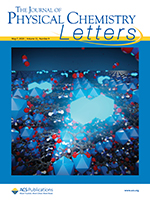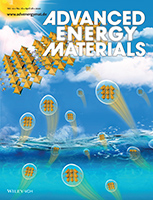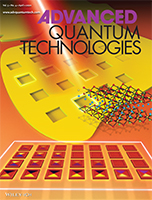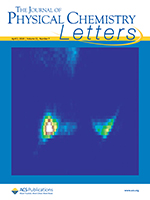A novel gas-sensing mechanism exploiting lanthanide luminescence modulation upon NO2 adsorption is demonstrated. Two isostructural lanthanide MOFs are used, including an amino group as the recognition center for NO2. Energy transfer from the ligands to Ln is strongly dependent on the presence of NO2, resulting in an unprecedented photoluminescent sensing scheme. Read more »
Journal Covers
Coordination Engineering of Single-Crystal Precursor for Phase Control in Ruddlesden-Popper Perovskite Solar Cells
Chaochao Qin, Alex K.-Y. Jen, Kai Yao and co-workers describe a generic guideline for fine tuning colloidal properties of 2D perovskites via coordination engineering of the single-crystal precursor solution. In nonpolar co-solvent media, the derived colloidal templates prefer to grow along the vertical direction with a narrow phase variation, elucidating the critical role of colloidal chemistry in low-dimensional perovskite solar cells. Read more »
Highly Enhanced Curie Temperature in Ga‐Implanted Fe3GeTe2 van der Waals Material
Researchers report an effective and reliable method of increasing the Curie temperature of ferromagnetic Fe3GeTe2 (FGT) van der Waals (vdW) material by Ga implantation, opening a new opportunity for tailoring the magnetic properties of vdW materials beyond room temperature for future spintronics applications. Read more »
The Inside‐Outs of Metal Hydride Dehydrogenation: Imaging the Phase Evolution of the Li‐N‐H Hydrogen Storage System
Hydrogen absorption and release in lithium amide involves chemical and structural change. Scanning transmission x‐ray microscopy visualizes this phase evolution inside particles, showing a core‐shell architecture, with the more hydrogenated species as the shell for hydrogenation and, more surprisingly, for dehydrogenation as well. Read more »
Full Energy Range Resonant Inelastic X-ray Scattering of O2 and CO2: Direct Comparison with Oxygen Redox State in Batteries
The evolving oxygen state plays key roles in the performance and stability of high-energy batteries involving oxygen redox reactions. Comparison of the mRIXS profiles of four different oxygen states reveals that oxygen redox states in batteries have distinct widths and positions along the excitation energy. Read more »
Blending Ionic and Coordinate Bonds in Hybrid Semiconductor Materials: A General Approach toward Robust and Solution-Processable Covalent/Coordinate Network Structures
Blending ionic and coordinate bonds in copper iodide based hybrid semiconductor materials with extended covalent/coordinate network structures leads to greatly enhanced solubility and solution processability, making it possible to form high-quality films for device fabrication. Read more »
X-ray Crystal Structures of the Influenza M2 Proton Channel Drug-Resistant V27A Mutant Bound to a Spiro-Adamantyl Amine Inhibitor Reveal the Mechanism of Adamantane Resistance
The M2 proton channel, shown with front and back monomer helices removed, is an anti-influenza drug target. Here, a bound inhibitor blocks the transport of protons through the V27A mutant channel. Read more »
Highly Permeable Perfluorinated Sulfonic Acid Ionomers for Improved Electrochemical Devices: Insights into Structure-Property Relationships
Perfluorinated sulfonic acid ionomers (PFSAs) induce significant mass-transport limitations in proton exchange membrane fuel cell catalyst layers due to their semicrystalline PTFE-based matrix. We present a novel PFSA with an amorphous perfluorinated matrix, which vastly improves gas permeability, reduces transport resistance, and improves catalyst utilization in functional catalyst layers. Read more »
77Se NMR Probes the Protein Environment of Selenomethionine
Sulfur is critical for protein structure and function but lacks a sensitive isotope for nuclear magnetic resonance (NMR) experiments. This can be circumvented by substituting sulfur with selenium, which has an NMR-compatible isotope (77Se). To enable interpretation of the NMR data, the structures of five of protein variants were solved by x-ray crystallography to a resolution of 1.2 Å. Read more »
Structural Basis for Finding OG Lesions and Avoiding Undamaged G by the DNA Glycosylase MutY
Finding OG and avoiding G: DNA repair enzyme MutY distinguishes between undamaged guanine (green) and oxidized guanine when targeting OG:A mispairs. A structural motif within the C-terminal domain (violet) responds to OG to G substitution and appears mechanistically coupled to the adenine removal site (gray) in the N-terminal domain (cyan). Read more »
- « Previous Page
- 1
- …
- 12
- 13
- 14
- 15
- 16
- …
- 21
- Next Page »









